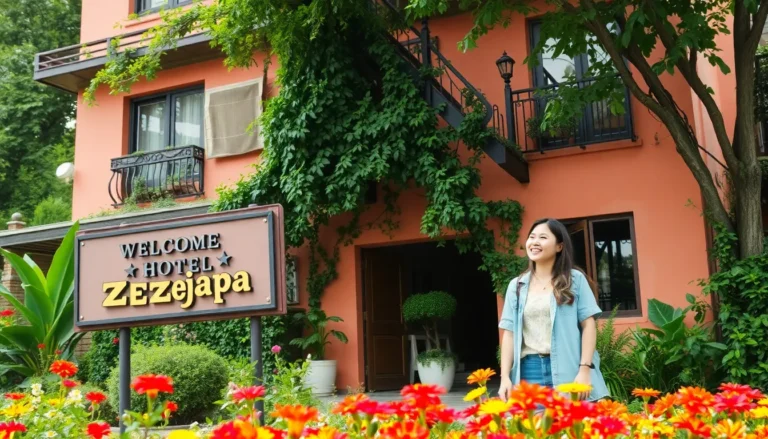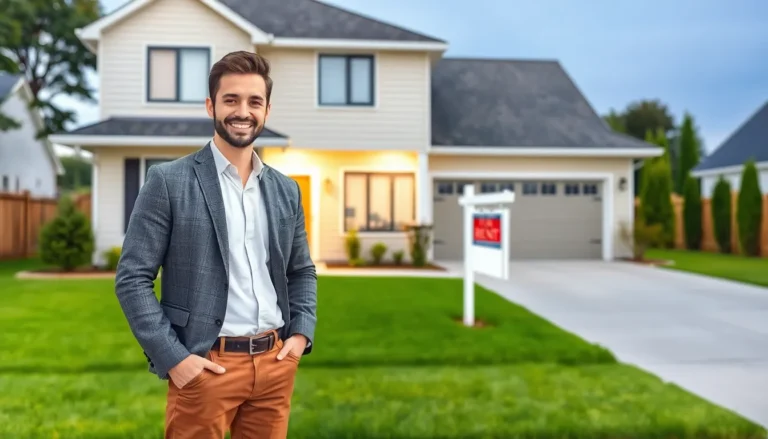In a world where aesthetics reign supreme, the phrase “aesthetic takeover” has become the battle cry for creatives and trendsetters alike. It’s not just about pretty pictures anymore; it’s a full-blown revolution where style meets substance in the most delightful way. From Instagram feeds that make you question your own decor choices to TikTok trends that transform mundane spaces into visual masterpieces, the aesthetic takeover is here and it’s not holding back.
Table of Contents
ToggleUnderstanding Aesthetic Takeover
Aesthetic takeover represents a significant shift in how individuals engage with their environments. This movement incorporates style and substance, redefining creative expression across various platforms.
Definition and Concept
Aesthetic takeover refers to the trend where personal spaces reflect curated aesthetics. This phenomenon emphasizes visual appeal and intentional design. Individuals redesign their environments, utilizing colors, textures, and decor to communicate personality. By integrating inspiration from social media, many adopt cohesive themes, transforming their surroundings into expressive art forms. Ultimately, aesthetic takeover intersects creativity and lifestyle, reshaping cultural standards of beauty.
Historical Context
Aesthetic takeover roots trace back to the rise of modernism in the early 20th century. Movements like Bauhaus emphasized functionality combined with beauty. The 1960s and 1970s saw a surge in countercultural aesthetics, influencing personal expression. With the advent of digital technology, the 21st century brought new opportunities for widespread dissemination of aesthetic ideas. Social media platforms accelerated this movement, allowing individuals to share and promote distinctive styles globally. These historical milestones paved the way for today’s aesthetic takeover, making it an integral part of contemporary culture.
The Rise of Aesthetic Takeover
This phenomenon significantly influences how individuals relate to their spaces and identities. The aesthetic takeover embodies a cultural shift that redefines personal and public aesthetics.
Social Media Influence
Social media platforms like Instagram and TikTok serve as catalysts for the aesthetic takeover. They provide platforms for users to share curated content, fostering a culture where visually appealing environments gain widespread admiration. Influencers often showcase their unique styles, inspiring others to enhance their surroundings. User-generated content creates trends that encourage community engagement and exploration of various aesthetics. As visual formats dominate these platforms, audience exposure to diverse aesthetics accelerates personal interpretation and expression. The ability to instantly share and replicate impressive setups leads to a significant rise in collective aesthetic consciousness.
Cultural Shifts
Cultural shifts shape the framework of the aesthetic takeover. A growing emphasis on individuality drives people to design personal spaces that reflect their unique identities. This movement draws inspiration from historical art and design movements like Bauhaus, emphasizing functionality alongside beauty. In contemporary settings, minimalism and maximalism both appeal, showcasing diverse aesthetic expressions. The desire for authenticity connects recent trends to the countercultural movements of the 1960s and 1970s, which embraced personal style over mainstream norms. As these shifts continue, blending personal, social, and digital spaces becomes increasingly vital in defining modern aesthetics.
Impact on Various Industries
The aesthetic takeover influences multiple industries, transforming their approach to creativity and engagement.
Fashion and Beauty
Fashion and beauty sectors experience a significant shift due to this movement. Consumers seek outfits and products that embody visual appeal and personal identity. Influencers showcase curated looks, encouraging followers to experiment with their styles. Brands respond by promoting inclusivity and diversity, appealing to a wider audience. The rise of sustainable fashion reflects a desire for authenticity, further shaping industry trends. Photogenic packaging and branding capture attention digitally, driving sales. Overall, the emphasis on aesthetics revolutionizes consumer behavior and brand strategies.
Home Decor and Design
Home decor and design undergo a dramatic transformation amid the aesthetic takeover. Individuals strive to create personalized spaces that resonate with their identities. Online platforms provide inspiration and DIY tutorials, enhancing creativity. A surge in eco-friendly materials connects with consumers looking for sustainability. Minimalist and maximalist designs coexist, showcasing varying individual preferences. Brands focus on aesthetics that blend style with functionality, promoting items that are both beautiful and practical. This evolution shapes how people curate their living environments, reflecting wider cultural trends.
Art and Media
Art and media sector dynamics shift significantly with the rise of aesthetic takeover. Artists leverage social media to showcase their work, gaining immediate recognition and feedback. Visual storytelling becomes crucial; compelling imagery enhances reach and engagement. The blending of various art forms results in innovative styles that captivate audiences. Creative collaborations emerge, merging artists with brands for unique campaigns. This movement redefines artistic expression, encouraging a collective appreciation of diverse aesthetics. Overall, art’s relationship with media adapts, highlighting its relevance in modern culture.
Critiques of Aesthetic Takeover
Critiques of aesthetic takeover highlight potential drawbacks within the movement.
Commercialization of Authenticity
Commercialization risks diluting the essence of personal expression. Brands leverage the aesthetic takeover to sell products, often prioritizing profit over genuine creativity. This commodification pressures individuals to conform to a curated ideal, overshadowing true individuality. Social media platforms amplify this issue by promoting sponsored content that mimics organic posts. Consumers may feel compelled to seek validation through aesthetic alignment rather than authenticity. Consequently, this pursuit of visually appealing spaces sometimes prioritizes appearance over personal value.
Impact on Mental Health
Mental health implications arise with the rise of curated aesthetics. Individuals frequently compare their environments to heightened standards showcased online. Such comparisons can lead to feelings of inadequacy and decreased self-esteem. The constant need for validation through likes and shares further exacerbates this issue. It’s vital to recognize how curated content alters perceptions of reality. Moreover, pressure to maintain an ideal aesthetic can result in stress and anxiety. Balancing personal expression with external expectations remains essential for mental well-being.
The aesthetic takeover marks a profound shift in how individuals interact with their environments and express their identities. As social media continues to play a pivotal role in shaping trends and encouraging personal creativity, the movement fosters a culture of visual storytelling and curated spaces. While this transformation brings opportunities for self-expression and community engagement, it also raises concerns about authenticity and mental health. Balancing personal aesthetics with the pressures of social validation is crucial for maintaining a healthy relationship with one’s surroundings. Ultimately, the aesthetic takeover invites a deeper exploration of what beauty means in contemporary society, encouraging individuals to embrace their unique styles while remaining mindful of the potential challenges that accompany this cultural phenomenon.




